It’s that middle of February time and love is in the air. What does that have to do with video games? Everything. Well, everything depending on what game you’re playing. In the spirit of the holiday I want to take a look at an RPG series that focuses on the theme of love: The Lunar series.
The series made its debut with Lunar: The Silver Star in 1992 on the Mega CD in Japan followed by a late 1993 release for the Sega CD in the US. It was developed by Game Arts who had previously produced Silpheed, Thexder, and the often forgotten NES RPG Faria. Lunar is one of their more famous games, along with the Grandia series. In Japan it’s often regarded as the first “killer-app” for the Mega CD and was it’s number one selling title throughout the add-on’s lifetime. The US version, published by Working Designs met with similar praise.
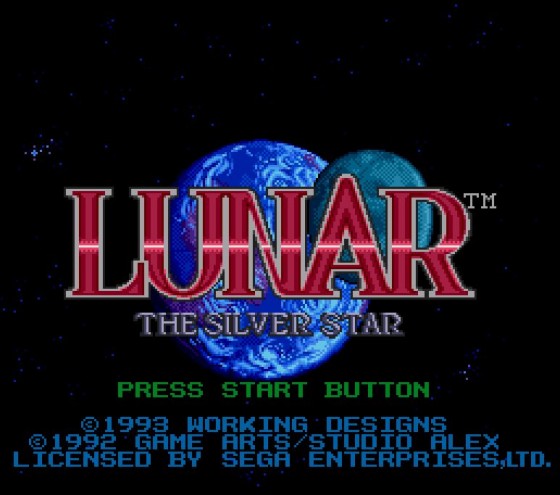
This might have been the first time your Sega CD seemed worth it.
What I always felt set Lunar apart from the other RPGs of it’s era was the rich story and characters. Most other RPGs had more of a focus on the battle system and exploration. While they still told stories, Lunar unfolded more like a book, which was what drove me to move forward in the game more than anything else. That’s not to say the battle system and exploration were lacking, in fact they were fantastic as well.
Lunar is filled with tons of lore which fills in a lot of the backstory. A lot of this is told through NPCs and books as you progress through the game. You’ll learn about the floating Magic City of Vane. You’ll visit shrines and hear tales about Althena and her four heroes. There’s also dragons, and a Magic Emperor causing chaos throughout the land, kidnapping women who are talented singers. Oh yeah, isn’t Luna a talented singer?
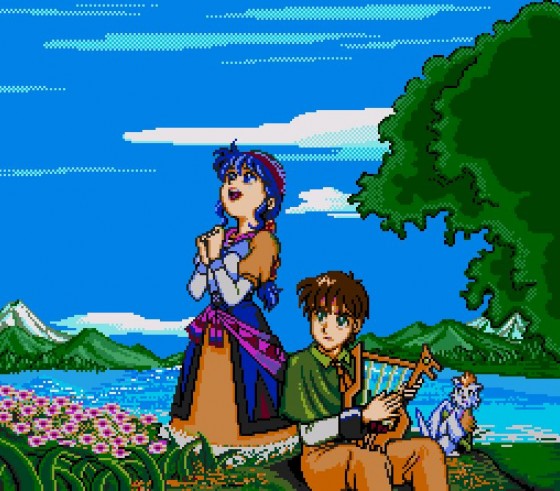
Come on, Alex. This isn’t Sewer Shark. Don’t look so bored.
The story starts out in the backwoods town of Burg where we’re introduced to our ginger haired, green eyed hero, Alex. Every day Alex goes to the monument for Dragonmaster Dyne and daydreams about having his own adventures. We also meet Luna, your adoptive sister and main squeeze. I always thought that it was a little odd that she’s your lover and your sister, but whatever, let’s roll with it. You’re also accompanied by Nall, who claims to be a baby white dragon, but resembles a flying cat more than anything. Expect a lot of jokes about that throughout the game. Your best friend Ramus rambles on about going on adventure of your own seeking out the Dragon Diamond, which ends up blossoming into a more in depth undertaking than originally thought. Alex leaves behind Burg and Luna to seek out adventure on the new continent and learn about becoming a Dragonmaster himself.
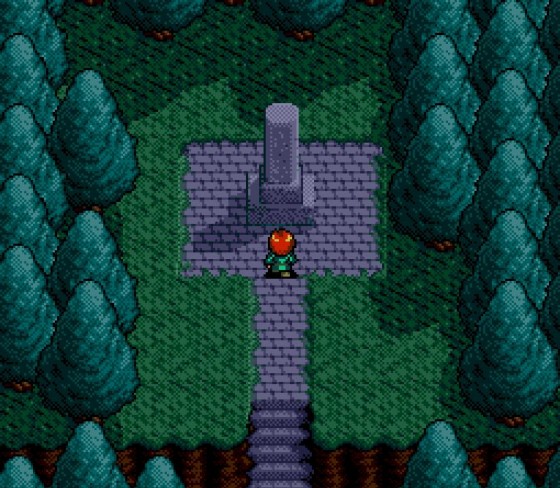
Alex stands at Dyne’s monument. Sometimes it’s good to daydream.
Along the way Alex meets some companions: Nash, who’s quite annoying and you will probably hope dies along the way but nonetheless a powerful magic user. Mia: Junior Premier of the Magic Guild of Vane and Daughter of Lemia, one of the Four Heroes of Althena. Jessica, the wild tomboy beast girl and daughter of “Hell Mel” another of the Four Heroes of Althena. Kyle, thief and all around womanizer and badass who’s in charge of the Nanza Barrier.
There’s plenty of other interesting characters, such as the iconic Ghaleon, Taben the flatulent inventor, and Laike, the adventurer who always seems to be in the right place at the right time. There’s some M. Night Shyamalan-ey twists along the way too.
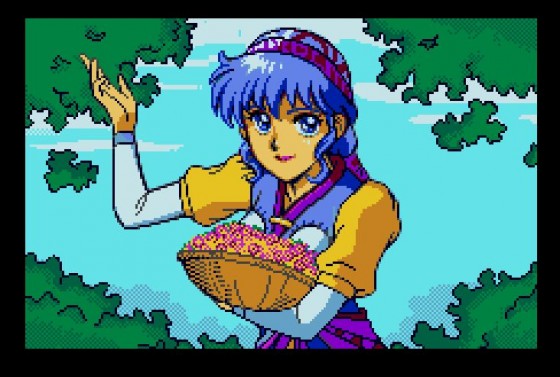
Who else were you expecting to jump out of the bushes at you?
As I said, the main theme throughout the game is love. Incidentally, all of the main characters are all couples. Of course we have Alex and Luna. It’s his love for her that drives him to become a Dragonmaster to not only save Lunar, but save the love of his life as well. We also have Nash and Mia who are sort of off-again on-again, and have to deal with their own issues to overcome the Magic Emperor. Kyle and Jessica have a similar situation going on as well except they’re distinctly broken up when you first encounter them.
The music in the game is absolutely fantastic. Taking advantage of the technology, all of the music is CD-Audio based. The tracks range from industrial to orchestrated pieces with a fast paced opening theme complete with lyrics.
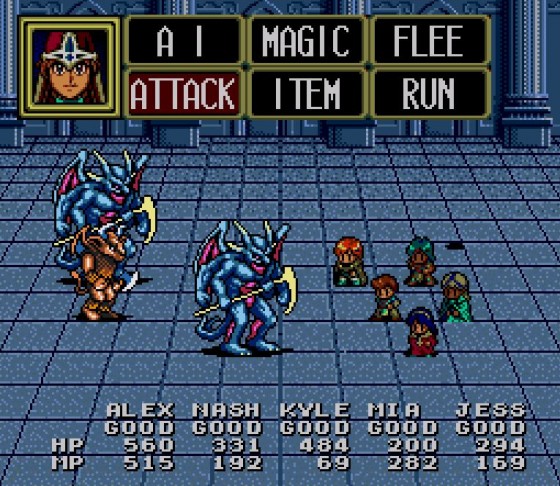
Attack the demons? Everything’s a good idea when you’re levels are this high!
The gameplay is what you expect from a JRPG from the early 90’s. You’ve got your random battles in dungeons and on the world map. The difficulty level isn’t too high, but it’s not a cakewalk either. You’re going to want to do some grinding towards the end, but not so much that it seems like a chore or you get lost in it. As your levels go up, the characters learn more and more spells and special attacks. The battle system is turn based but has a bit more strategy to it than most other RPGs of the era. It looks like Final Fantasy at first glance, but the characters actually move around on the battlefield, and their placement actually matters. Certain spells you use have an area of effect around you, as do the enemies.
But wait, there’s more!
Lunar: The Silver Star was groundbreaking in it’s day. While it’s certainly aged, it’s still playable if you can track down a copy on the Sega CD. The original game hasn’t seen any re-releases, but the remake has. In fact, there’s been several remakes of it throughout the years.
The most notable is Lunar: Silver Star Story, which originally showed up in the Sega Saturn in Japan, and was ported to the PlayStation and eventually released by Working Designs in the US. Personally, I feel the original game is better, but the story has a much better flow in the remake. Silver Star Story is significantly easier and shorter than the original game, cutting out a few plot points and towns towards the end, but adding in some characters and scenes along the way.
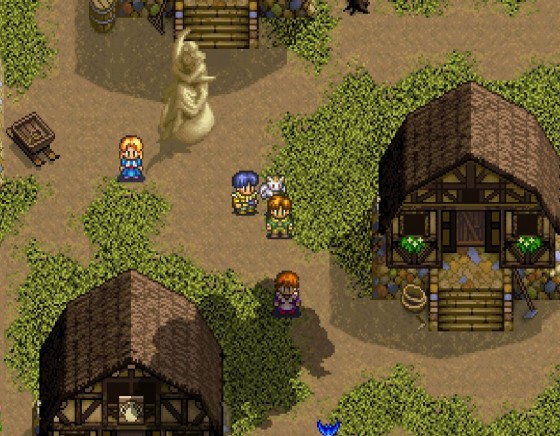
Burg, in all of it’s 32-bit glory!
There are some minor changes too, for example Alex plays a harp in the original game, but plays an ocarina in the remake. The soundtrack is brand new which is kind of a bummer. While the new soundtrack is good, the original had a lot of charm to it. Since the music in the remake was done with MIDI instead of CD-audio like the original, the quality took a noticeable hit, especially in the PlayStation version. Some of the instruments had to be changed to accommodate for the PlayStation’s sound synth. I always felt like the end result was the PlayStation version being slightly off pitch compared to the Saturn version, but it’s only noticeable if you’ve played both versions. Random battles were removed and replaced with pre-placed enemies and encounters on the world map are removed entirely leaving not much of a point to wandering around on it.
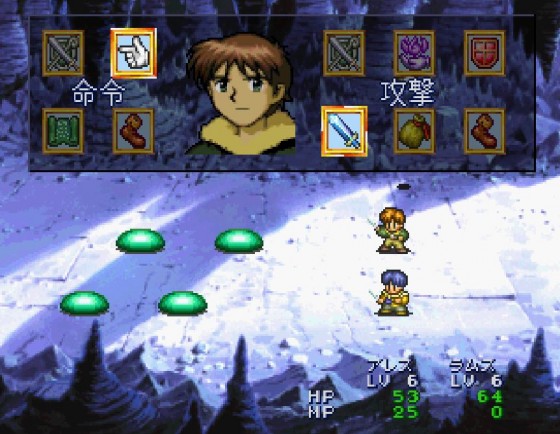
Why are slimes in every JRPG? What’s the deal?
Lunar Legend was a remake for the GameBoy Advance, which is heavily based off of Silver Star Story. The story is a bit more streamlined this time, the music is downgraded even more. The battle system was changed around due to the smaller screen, removing some of the strategy and difficulty. All characters and monsters are fixed this time around. The biggest addition the game had was “limit break” style special moves that each character can do. Aside from that, it’s an often forgotten as it probably should be.
Most recently for the PSP was Lunar: Silver Star Harmony, which I like to call Lunar: Silver Star Story HD Remix. It’s a term of endearment really, as I like this version a lot. It took awhile for it to grown on me, and the purist in me hates the redrawn sprites. Part of that is because Lunar always had a certain look to it, and this doesn’t really have that. It’s not bad though. The backgrounds are all pre-rendered. They look good, but some of the towns made be feel a bit claustrophobic due to the isometric viewpoint in most of them.
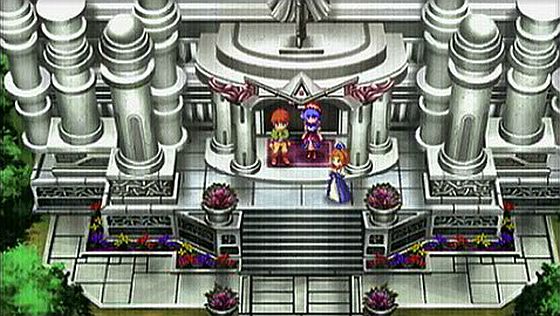
Silver Star Harmony’s art style grew on me after a while.
Harmony doesn’t take any liberties on the story, aside from a few brief scenes that the opening of the game. Aside from that, everything’s lifted straight from Silver Star Story, the progression is exactly the same.
The music’s been redone, all remixes of the tracks from the Saturn/PlayStation version, and it sounds great. In fact, this version gets a lot of credit with me because of the music. Although all of the movies are the same from the Saturn/PlayStation version, there was a lot of fan outcry because Working Designs script and voice actors weren’t reused. I’m not really sure where I stand on the issue, to be honest. It was released over a decade later. Those guys from the Working Designs version probably aren’t even voice actors anymore. XSEED did a great job on the packaging, throwing in lots of extras in the spirit of the Working Designs packages. There’s a standard edition which you can still purchase straight from XSEED or buy digitally off of the PlayStation Network.
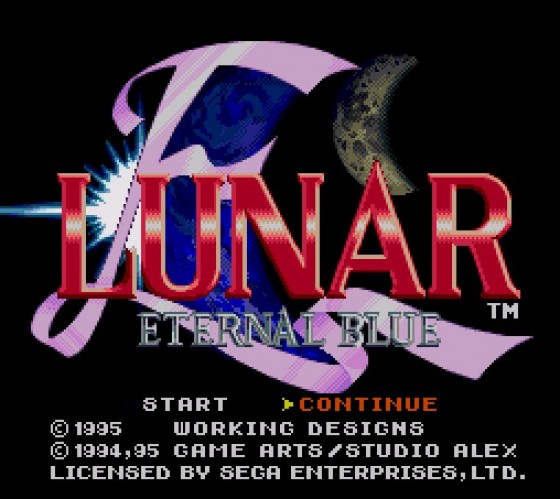
Notice how there’s no number? I actually didn’t know it was the sequel at first.
Lunar: Eternal Blue, the first true sequel to Lunar: The Silver Star came out in 1994 in Japan and late 1995 in the US is largely regarded as the swan song for the Sega CD. While what it does wasn’t considered as groundbreaking as it was when the original came out, it took the formula and ran with it. It’s a good deal longer than the first game, there’s more cutscenes and over an hour of spoken dialogue throughout the game.
While it’s set in the same world, it takes place about a thousand years after the events from the first game. The adventures of Alex and Luna have since faded into myth and legend. The story stands on it’s own fairly well, in fact, I played Eternal Blue first. The experience is certainly brightened by playing the original, as there are some familiar faces and places you’ll visit along the way.
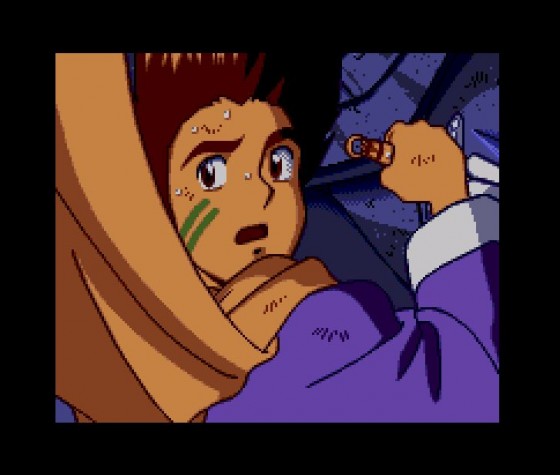
Eternal Blue’s cutscenes were a lot nicer than in the original.
This time around our hero is Hiro, an archaeologist obsessed with ruins and lore from ages passed. He’s also partnered with a baby dragon as well, Ruby, who eludes to having a crush on Hiro despite all the weird connotations that would go along with a human and a flying cat would have. During his explorations, he meets Lucia who’s come to Lunar from the Blue Star. Not much is really explained about who she is exactly, however she seems to mirror the Goddess Althena in terms of her abilities. Since she’s spent her life isolated on the barren Blue Star, she’s very naive. As she learns more about humanity, she begins to fall in love with Hiro. As Hiro is falling in love with Lucia, Althena’s Guard has identified her as “The Destroyer” and he must decide if he trusts Lucia or if he thinks she’s come to end the world.
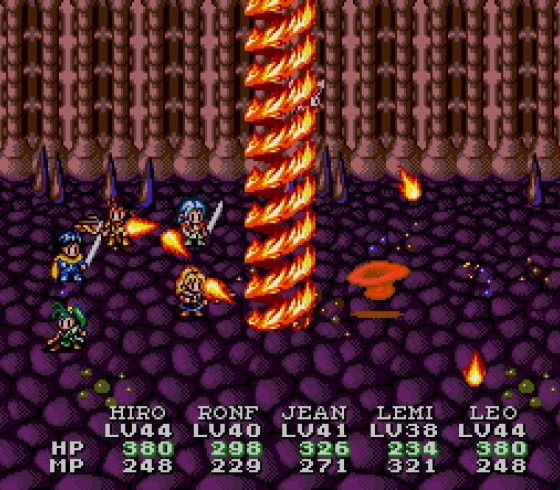
Yes! Burn everything! Light ‘em all on FIRE!!!!
Another key relationship in the game is between Ronfar, an ex-priest of Althena turned gambler, and Mauri, the current Four Heroes of Althena. Years ago Mauri contracted an illness along with a number of people in their home Village. Ronfar attempted to cure her, and was successful. However, in doing so Mauri’s personally was drastically changed. Feeling responsible, Ronfar left home and his duties and took up the dice instead of the cloth.
In general, the first Lunar game had a very lighthearted feel to it. While Lunar: Eternal Blue still has some of that it’s a bit darker of a game. That’s one of the main reasons I like Eternal Blue better. The gameplay itself is a lot more streamlined as well. All of the menus are organized better. The magic system is more straightforward, allowing you to upgrade spells and special attacks through magic experience instead of throwing more and more at you throughout the game. The graphics are improved as well, really showing off what late generation Genesis/Sega CD games can do.

I hope you like long dungeons. This game is full of them.
There was a remake for the Saturn and PlayStation as well, which mostly bridged the game with Silver Star Story, as there were some plot elements added in the remake that didn’t quite make sense with Eternal Blue as it was. While the graphics were enhanced, it wasn’t as drastic of a difference as with Lunar: The Silver Star to Lunar: Silver Star Story. The same features were added from Silver Star Story as well, meaning random battles are now gone and encounters on the world map are completely removed. The difficulty level was also cut down significantly due to shorter dungeons and nerfed bosses. I felt like the Sega CD version had a good length, it took me about 60 hours my first run through, about 35 on a replay. The Saturn/PlayStation version took me 23 hours my first playthrough and 14 on a replay.
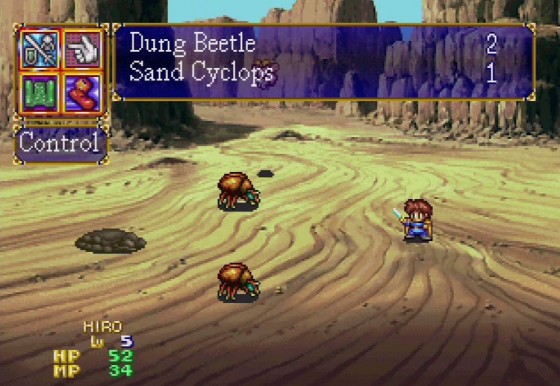
Yep! Dung beetles. They’re going to fly in your face if you don’t kill them.
The differences between the Saturn and PlayStation versions aren’t as drastic this time. The biggest difference is the music. While all of the tracks are the same compositions as the Sega CD version, the quality is a lot different. The Saturn version sounded great, on par with or better than the original Sega CD version. On PlayStation, the tracks were redone in MIDI. I was really disappointed and I don’t see why it was necessary. All of the cutscenes on Saturn were fullscreen and while they looked clearer on PlayStation they were about half the screen size in the Japanese version to keep the game at two discs. The American version’s cutscenes took up 75% screen, bumping the game up to three discs.
Sadly, there aren’t any recent remakes or digital releases of Eternal Blue. Maybe that will change in the future, for now your best bet is to track down a copy for Sega CD or PlayStation. While the Saturn version is great, I only suggest it if you’re a die-hard fan of the series or don’t mind dealing with the fact that it’s not translated. If you get your hands on the PlayStation version, you can play it in your PlayStation 3 no problem. Personally, I favor the Sega CD version, and I don’t think you’re missing out on anything if you play it over the remake. The problem is accessibility if you don’t have a way to play Sega CD games reliably.
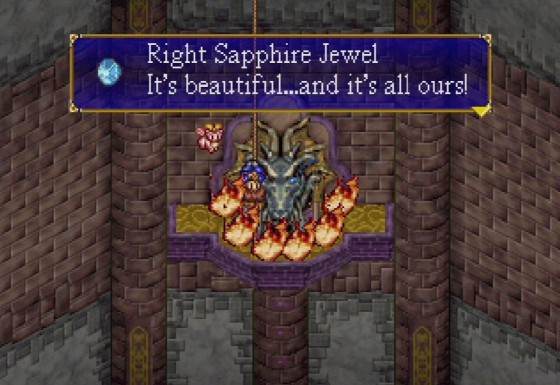
You think that second one will come in handy? Nah!
Lunar was the series that got me hooked on RPGs, and it will always have a special place in my heart because of that. There are a couple other games but these are the two flagship games with the most heart to them. There’s been rumors of a Lunar III for years, but I don’t think it’s ever going to happen. Most of this is due to disputes over the rights to the series. Grandia is seen by most fans, including me, as the spiritual successor. If you’re a long time fan of the Lunar series you owe it to yourself to at least play the first Grandia, which is available as a digital download for your PSP, PS3 or PS Vita.
Played it, hate it, still hunting for the Dark Scimitar? Tell RadGalaxy of your woes by commenting below or reach out to her on Facebook or Twitter.


